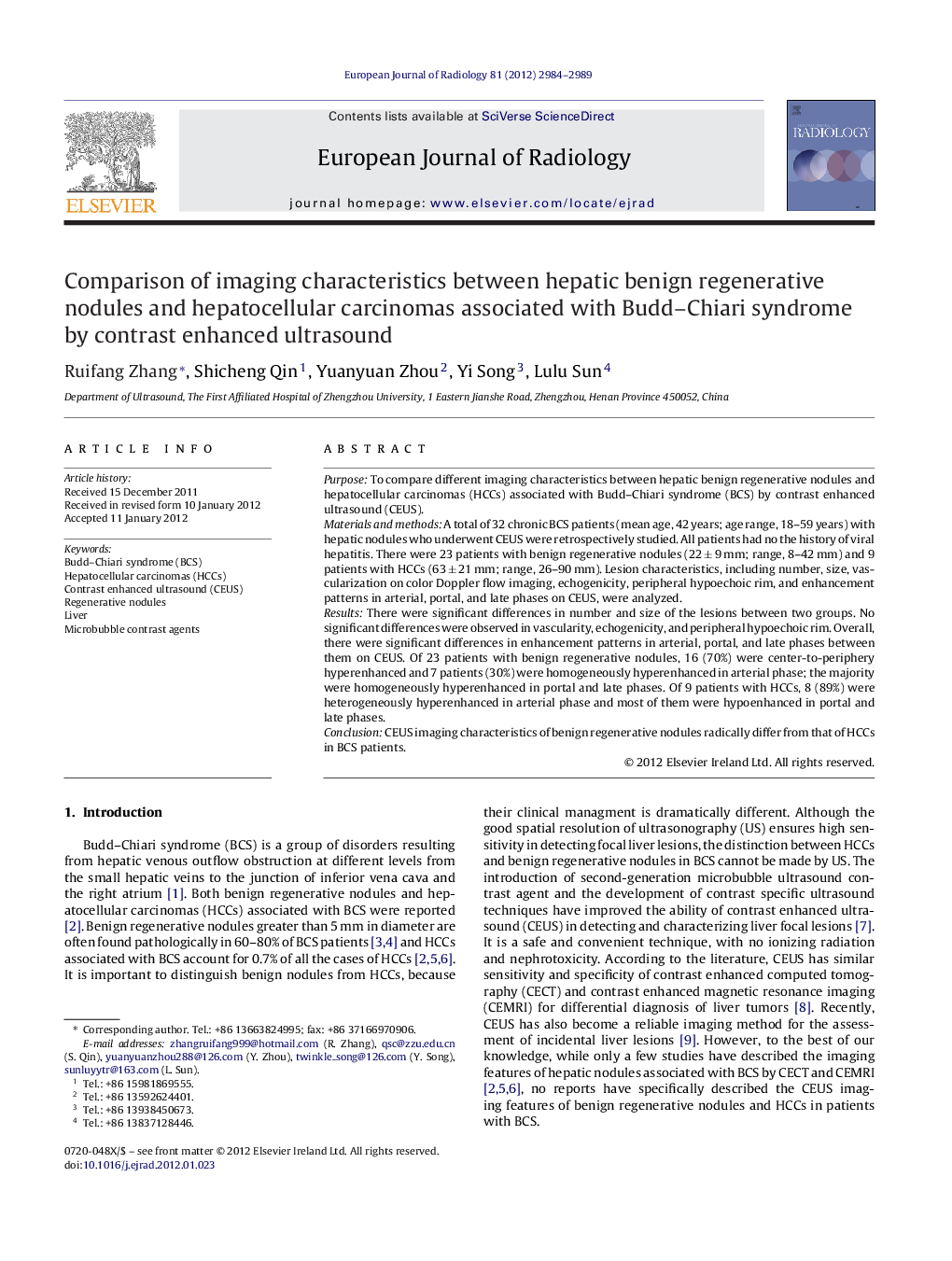| Article ID | Journal | Published Year | Pages | File Type |
|---|---|---|---|---|
| 6244176 | European Journal of Radiology | 2012 | 6 Pages |
PurposeTo compare different imaging characteristics between hepatic benign regenerative nodules and hepatocellular carcinomas (HCCs) associated with Budd-Chiari syndrome (BCS) by contrast enhanced ultrasound (CEUS).Materials and methodsA total of 32 chronic BCS patients (mean age, 42 years; age range, 18-59 years) with hepatic nodules who underwent CEUS were retrospectively studied. All patients had no the history of viral hepatitis. There were 23 patients with benign regenerative nodules (22 ± 9 mm; range, 8-42 mm) and 9 patients with HCCs (63 ± 21 mm; range, 26-90 mm). Lesion characteristics, including number, size, vascularization on color Doppler flow imaging, echogenicity, peripheral hypoechoic rim, and enhancement patterns in arterial, portal, and late phases on CEUS, were analyzed.ResultsThere were significant differences in number and size of the lesions between two groups. No significant differences were observed in vascularity, echogenicity, and peripheral hypoechoic rim. Overall, there were significant differences in enhancement patterns in arterial, portal, and late phases between them on CEUS. Of 23 patients with benign regenerative nodules, 16 (70%) were center-to-periphery hyperenhanced and 7 patients (30%) were homogeneously hyperenhanced in arterial phase; the majority were homogeneously hyperenhanced in portal and late phases. Of 9 patients with HCCs, 8 (89%) were heterogeneously hyperenhanced in arterial phase and most of them were hypoenhanced in portal and late phases.ConclusionCEUS imaging characteristics of benign regenerative nodules radically differ from that of HCCs in BCS patients.
